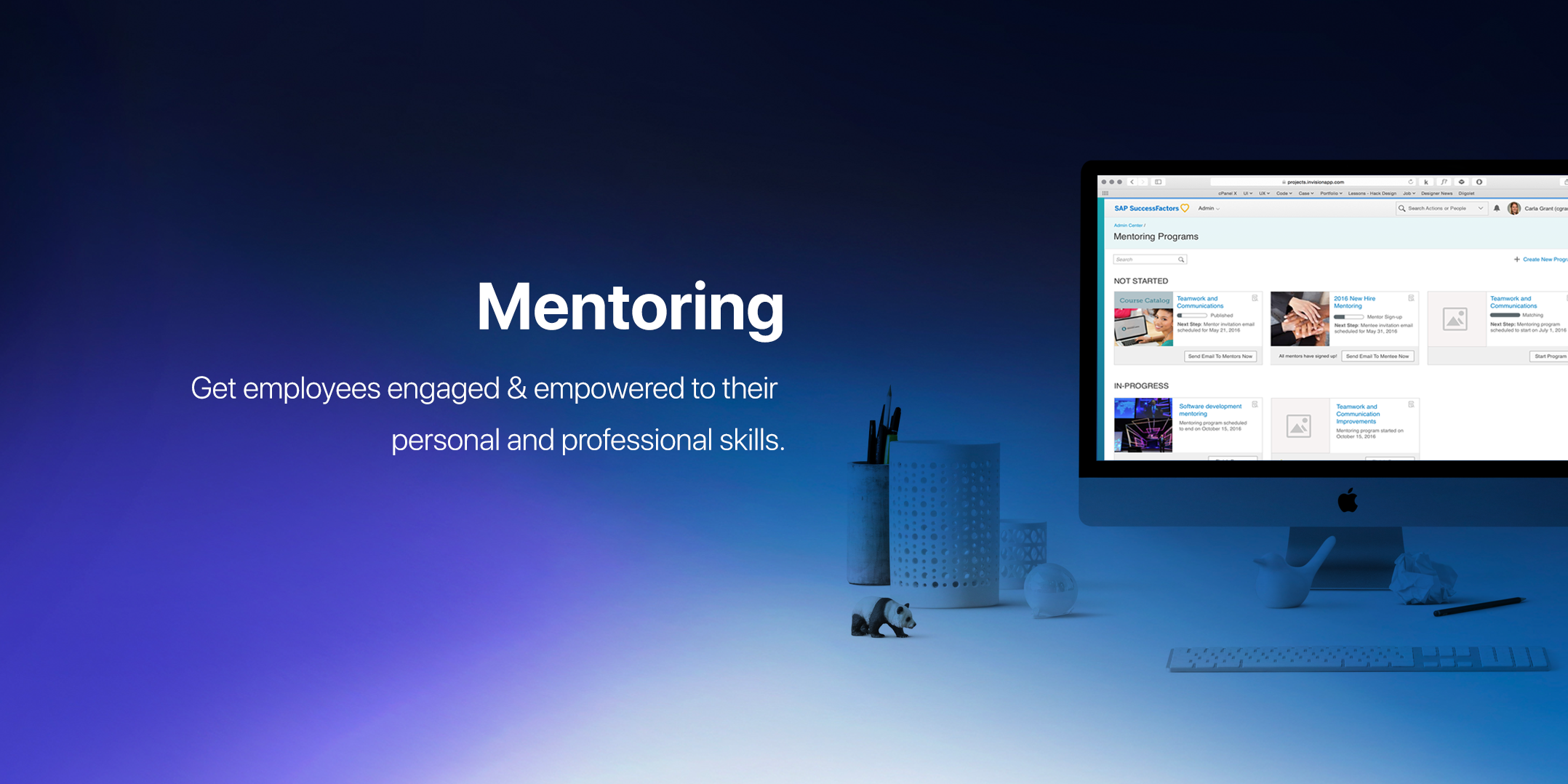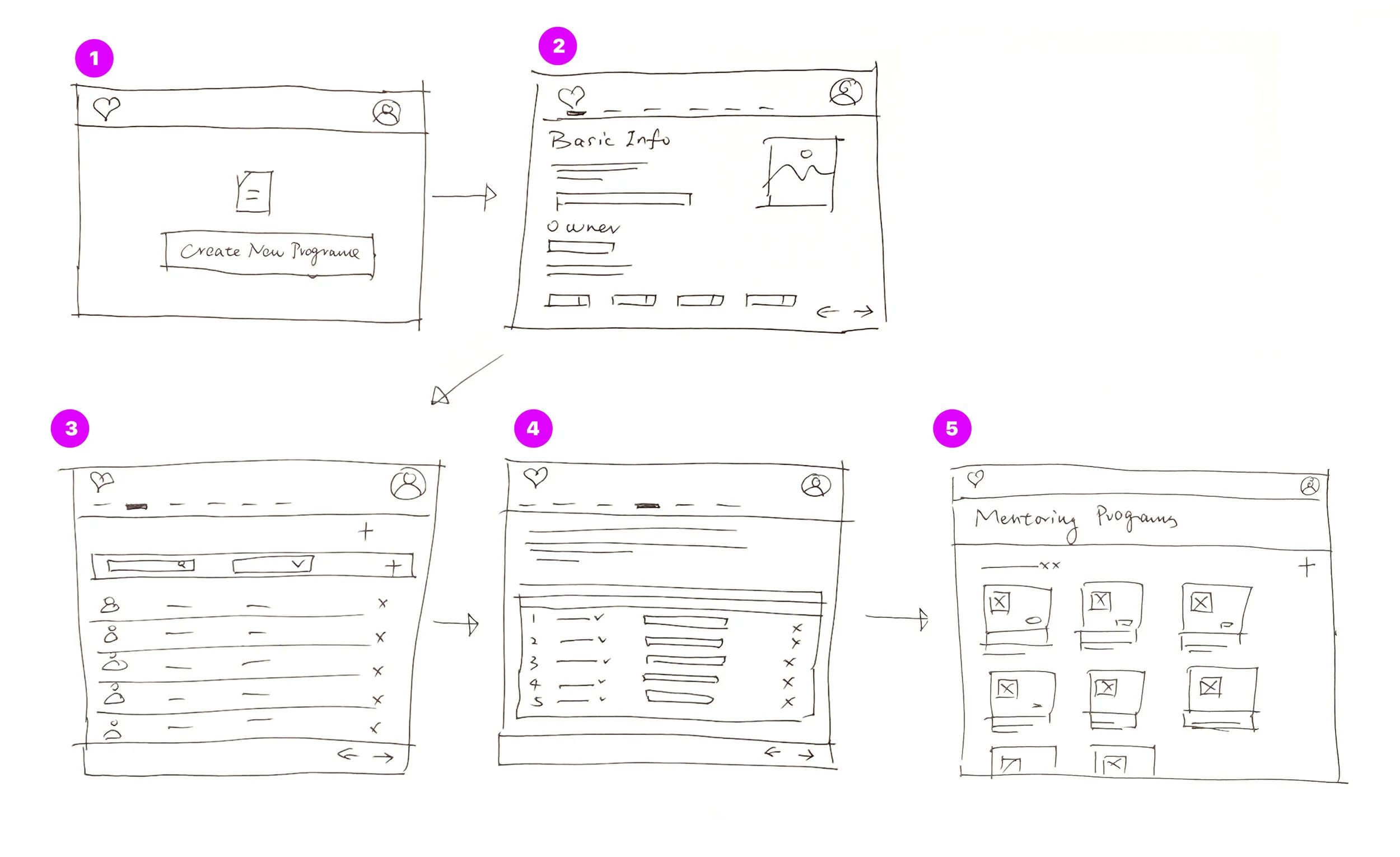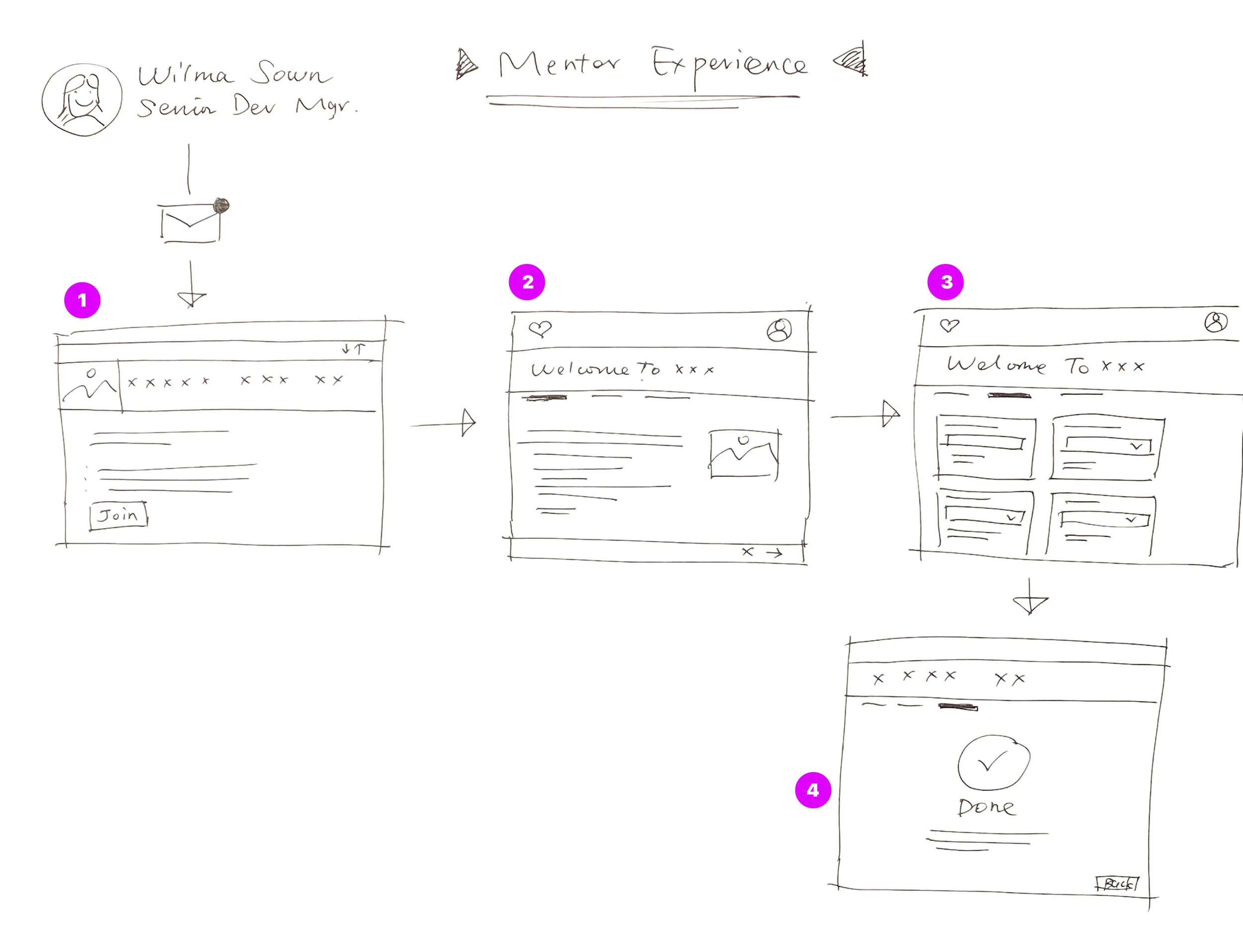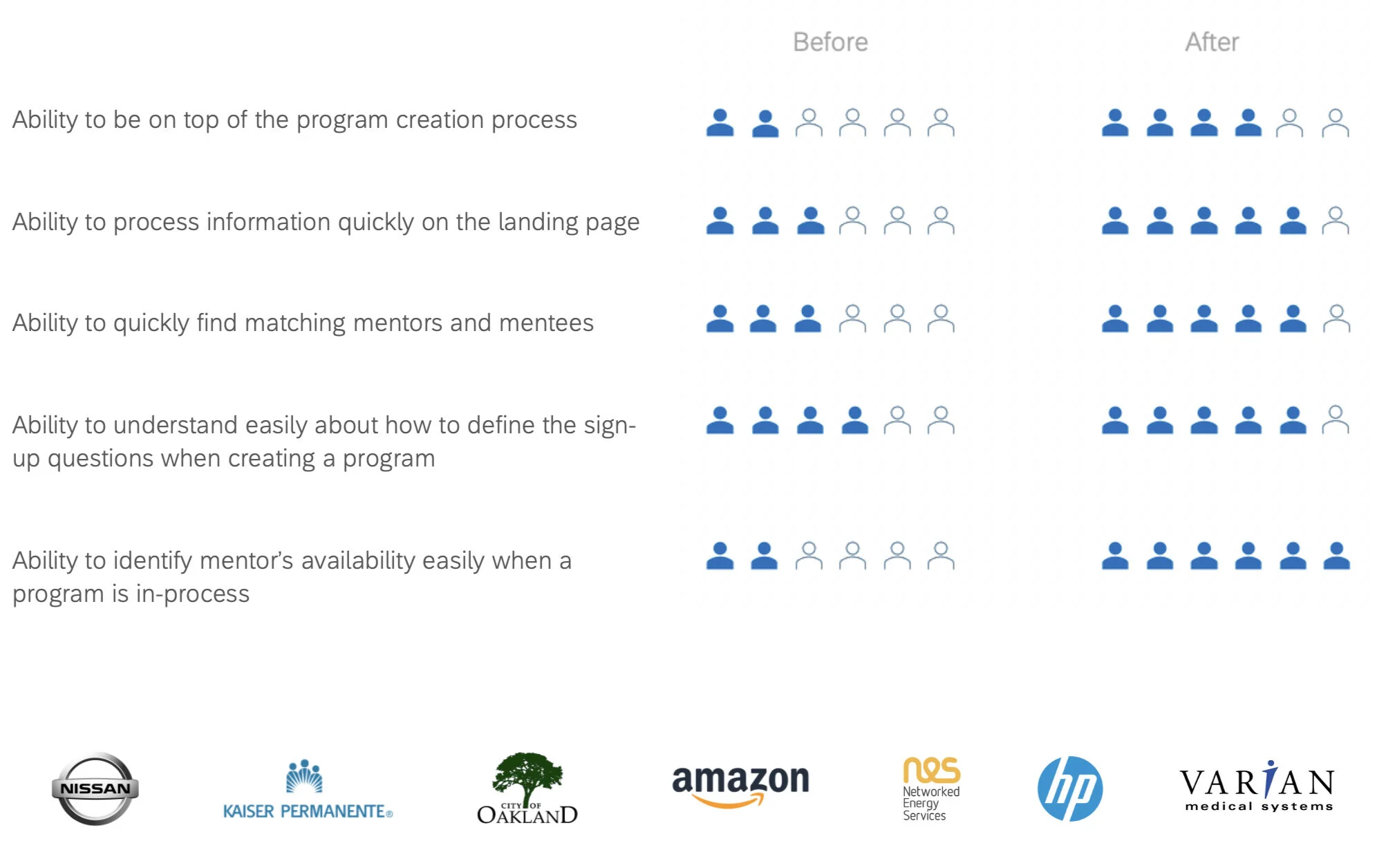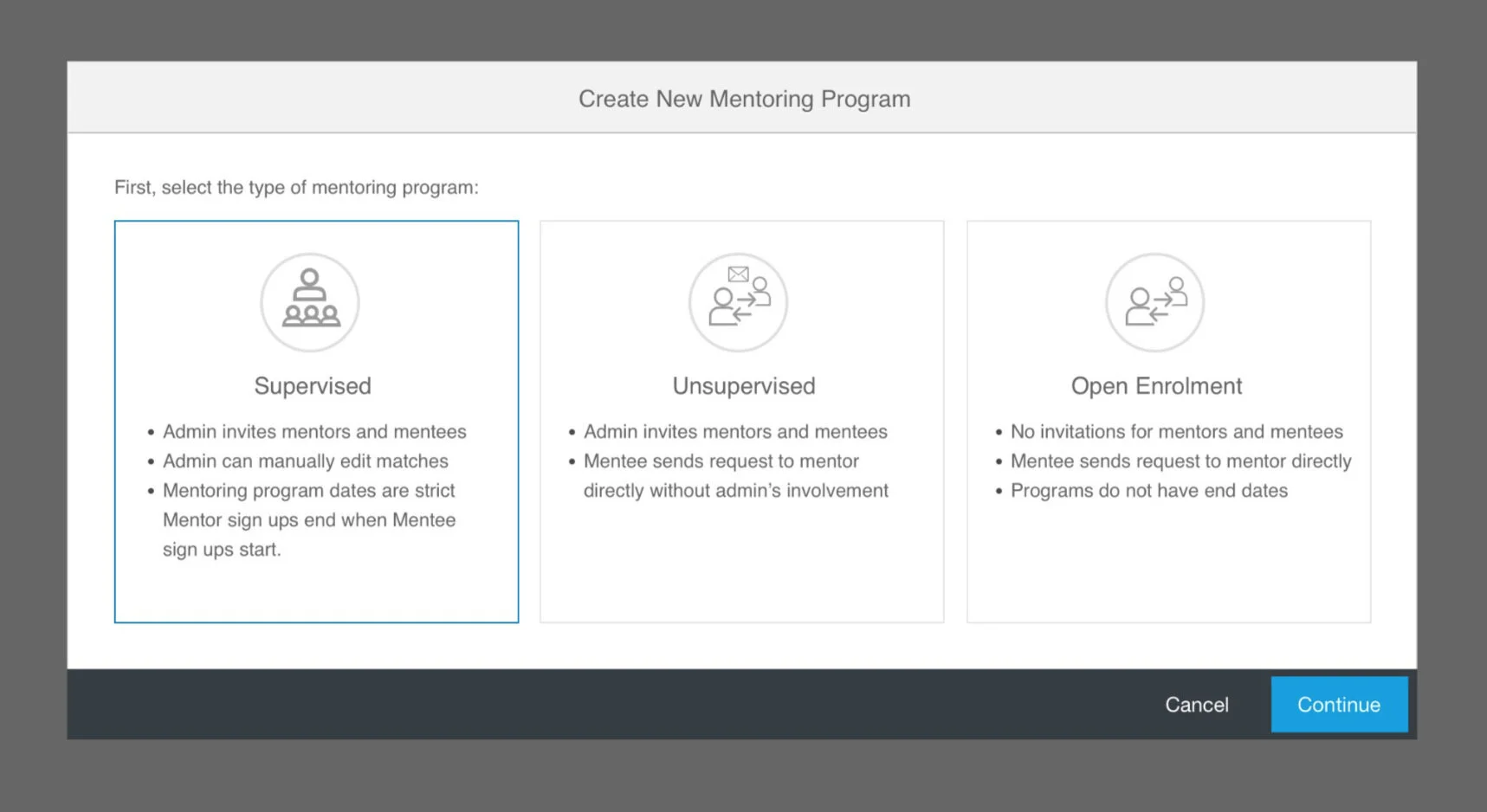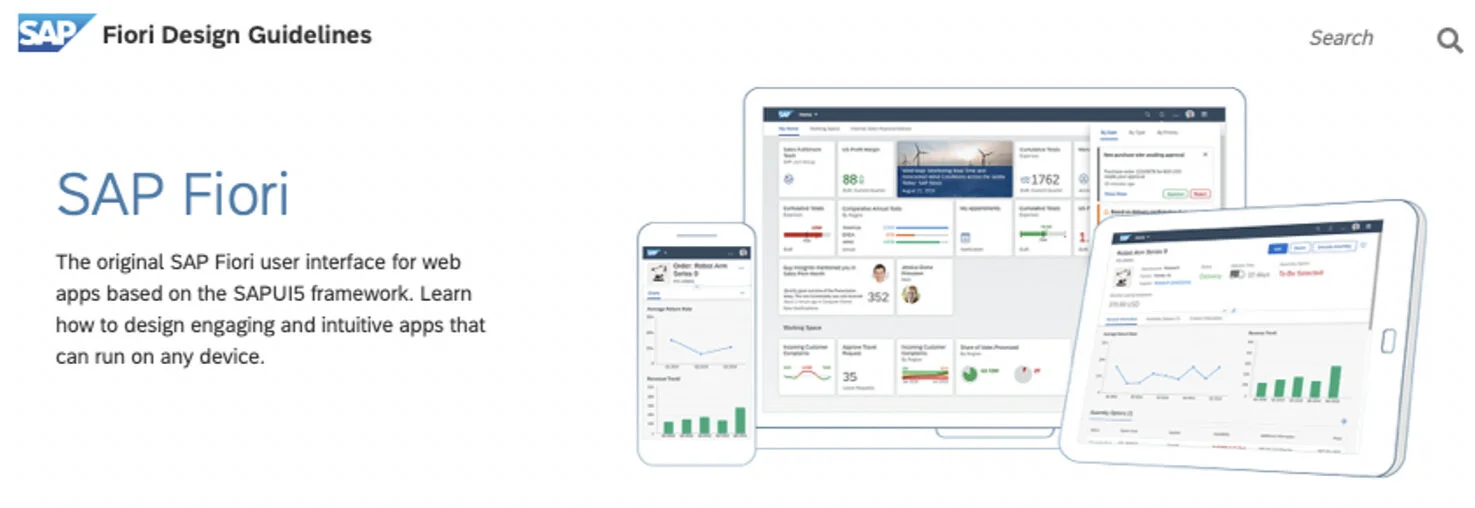Introduction
My Role
UX Design, Visual Design, Prototype
Design Brief
The business goal of this project was to help our customers build an online mentoring system to get employees engaged and empowered to their professional skills. In the older time many new customers were doing this offline which waste them lots of time on manual configuration, offline matching mentors and mentees. For existing SFSF customers they will also be benefited with an integrated mentoring system to do mentorship programs more efficiently, rather than doing this offline or in a separated system.
Project Status
Implemented & Live
Persona
User Research
I worked with user researcher to basically understand what types of mentorship programs customers are currently running? Who were the target users and how they were involved during the process? What were their motivations? How did they run the programs? What information user need while matching?
People we have talked to and program types they are running in their companies:
Key Findings
Supervised, Unsupervised, Open-ended discovered as primary methods supported by many companies.
Mentors have motivations to sign up and mentees like the ability to talk freely to mentors.
Mentee should be in charge.
Voice from the participants:
“Mentorship relationships that are set up by HR are “contractual” and you have more lasting mentorship relationships with people you have worked with.”
“The good thing about mentorship is it is an opportunity to give back and contribute my knowledge and what I learned to the company.”
“It’s kind of challenging for new employees to ask my manager to do stuff. It’s better to have a mentor. I can ask my super dumb questions from my mentor, he is very accessible, and he doesn’t do my performance review.”
“The goal is to make a mentee successful.
Mentee should be able to switch mentors. If mentor-mentee are not a good match, mentee should be able to switch. There should be no hard feelings, it should work for the mentee.”
Design Process
Based on the research and validated assumptions, I created these user journey maps and workflows to help us working through the logic of how contents should flow and making the foundation of the overall user experience.
Mentor/Mentee Journey Maps
Early design mockups & explorations
Usability Testing
I worked with researchers on user testings for both admin and mentor/mentee experience design to see what users reactions were before and after the design updates. The comparison of the usability assessments shows in the following chart (as well as the names of the participants)
Sample updates after testing:
Admin matching screen: Updating tiles to table view (with tree structure) to make it more scalable allowing users to view more data with clear mentor/mentee structure.
Admin landing page: Simplifying the view by hiding detailed mentorship data to deal with performance issue as well as making the UI more scalable to show more programs.
Final Design Mockups
Challenges
1, Understanding The Program Types
We spent a lot of time to understand the patterns via all the user interviews. Based on the use cases collected we offer the following 3 basic type of programs:
A, Supervised program: The new hire training is very common at all companies and all the time a mentor is assigned by an admin as an new employee usually don’t know anyone in the company
B, Unsupervised program: People mentioned that many companies have affinity groups like women of AT&T they have programs for high potential employees and executivies where the mentees prefer to have their own mentors. Some programs like subject matter expertise, wellness training usually have time constraints and mentee would like to reach out to their preferred mentors directly.
C, Open-ended program: Programs like general career development coaching, networking, etc (depending on people’s personal hobbies, and career interests)… that can be done via open-ended programs where after admin is not necessarily involved and people can take time to join or leave depending on their learning progress or capacities.
2, SAP Fiori
Based on SAP design directions our team was initiating UI consistency by aligning new product pages with SAP Fiori. It took me some time to learn Fiori design language and made the new pages consistent across the suites.
3, Technical Scope & Limitations
Understanding all the technical facts and limitations, scopes (matching algorithm, performance issue etc)
Final Implementation
What’s After…
1, Mobile Design Explorations
The mobile design didn’t get prioritized but I went ahead myself and made some concept design explorations of what the best mobile experience should be: https://youtu.be/nP1a_x0uprQ
2, Customer Feedback Follow-Up
We have channels through SAP customer community or the customer advisory panel to collect any feedback customer had for further improvements. Things I collected before I was assgined but not yet implemented:
Customer wants more flexibility on admin settings:
Add weighting to each criteria/category
Add Employee Profile matching in addition to only based on their preferences
Define a question as key question
Allow for attachments within the program… [FirstEnergy] uses a Mentoring Handbook & job aids so ability to open or link to those from within the module itself would create some efficiencies and convenience.
Mentor/Mentee experience (mostly about usability):
User lost data of preferences when they viewed mentor profile during sign-up. Need to keep everything saved all the time.
Mentee was not sure whether their requests of choosing desired mentor actually went through or not. It leads to their confusion of whether the system is working correctly or not. They may also need a confirmation or email otherwise they don’t even have the name of the mentor unless wrote it down during the sign-up process.
When mentor’s status got changed only mentors themselves will receive the notification email. Mentees or pending mentees should also get the notifications.
What If I Can Re-imagine…
Informal mentoring with more flexible ways for mentors and mentees to work together.
How might we allow better matching? (e.g. COC, OMP)
Mentorship process redesign with Teams/Slack integration!
